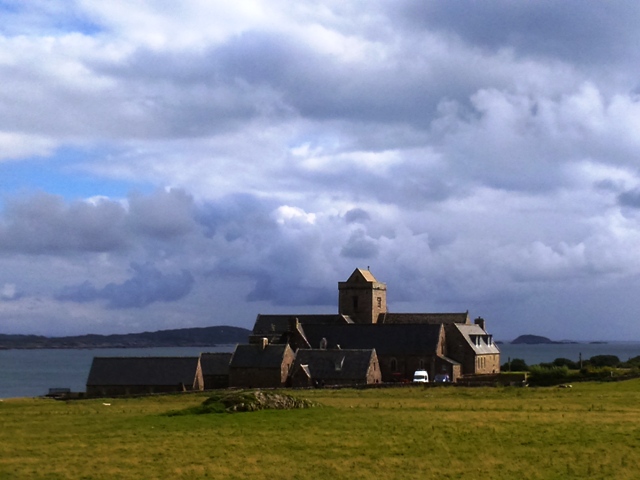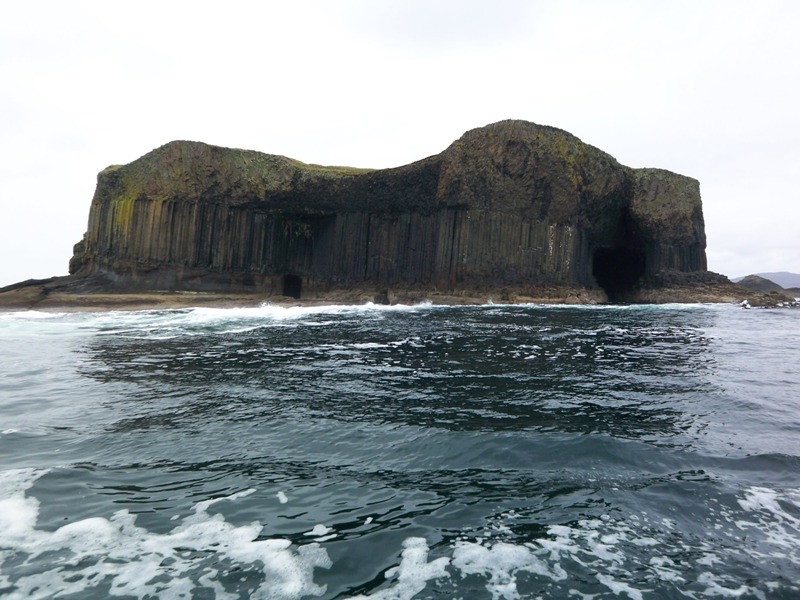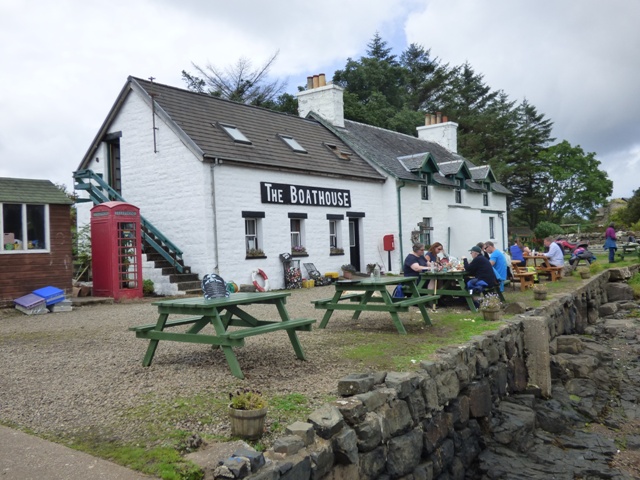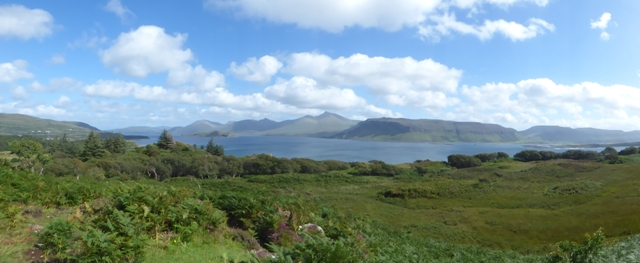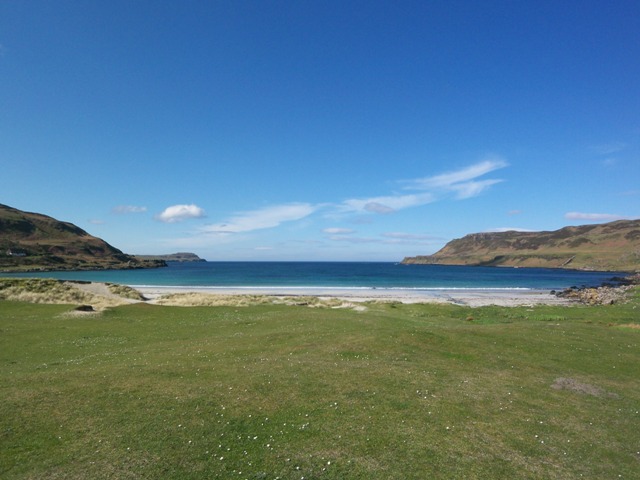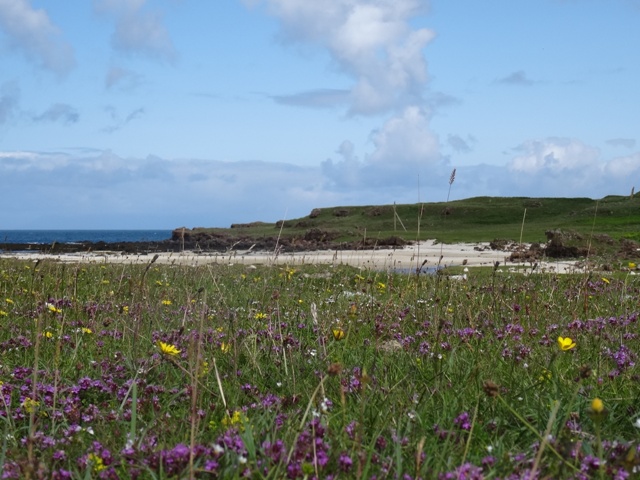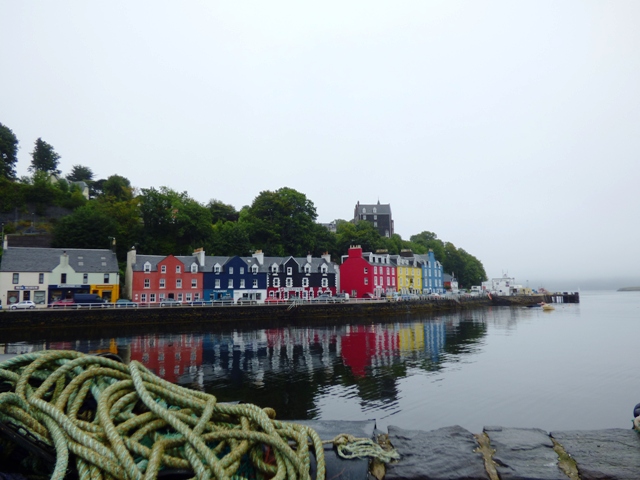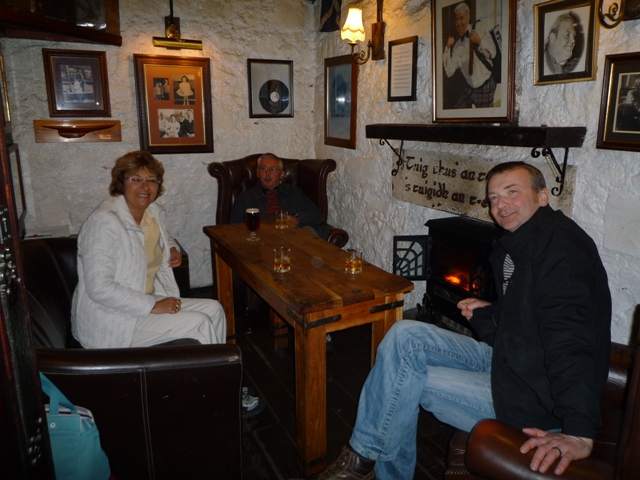Scotland Travel Blog August 2016
"Things To Do On Mull"
Bloggers seem to like creating lists. I've done a few in the past in our Blog pages, but I try to avoid doing "Top 10's" as that's a very subjective thing that will always leave somebody complaining that you missed out such and such. So before I launch into my list of "Things to do on Mull", I am adding a disclaimer that this is by no means and exhaustive list of what you can do on Mull, nor is it even a list of the best things to do on Mull. It is just some suggestions that we think you should try when you are on the island.
I maybe should have made it a list of things to do on Mull when it's raining as we've just had a very frustrating week on Mull when all our hill walking plans were scuppered by 4 days of incessant rain. And I really do mean incessant. I've never seen the likes of it in August. On the upside, the persistent precipitation did give us the opportunity to explore more tearooms and restaurants than we had originally planned. And we got to be pretty good at playing "Buck-a-roo" as it was one of the few games we had in the holiday cottage.
Anyway, disclaimer over, back to the list!
Duart Castle - it's an obvious thing to do, but it is one of the few all weather attractions on Mull and it is such a distinctive castle that you really have to include it into your tour plan. Especially, if this is a first trip to Mull. There are some parallels between this castle and Eilean Donan; both were uninhabitable ruins until being restored in the 20th century, and both have had starring roles in movies. Eilean Donan is arguably the bigger movie star, but Duart Castle had a prominent role in "Entrapment", as well as some lesser known movies such as "I know where I'm going" and "When 8 bells toll".
Duart castle is now owned by chief of the Maclean Clan, but the castle has been owned by many different clans in its time. The site of the castle was originally owned by the MacDougalls, and then it passed to the Lord of the Isles who in turn lost the castle to the Macleans sometime around 1476. The Macleans then backed the wrong side in a Civil War and forfeited the castle to Campbells who really didn't look after the place very well and it fell into disuse in the 18th century.
Fortunately, the Macleans have done a good job of tidying up the mess that the Campbells left behind and the castle provides you with a good way to kill an hour or two on a wet day. We should also mention that the castle tearoom is a good lunch stop.
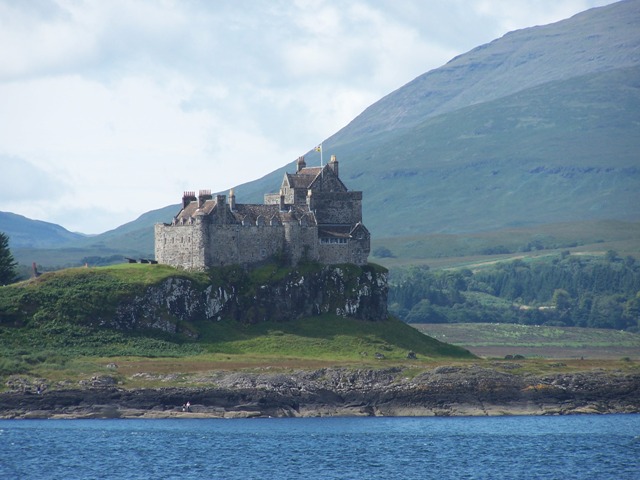
Lochbuie Standing Stones and Moy Castle - continuing along the A849 from Duart Castle towards Fionnphort, you pass the start of the road to Lochbuie. This first few miles of this road have been resurfaced, but don't be deceived as the rest of this road is very potholed and even has grass growing up through the tarmac in some sections. If you care about your car, it will take about 30 minutes to drive the 8 miles from the A849 to the shores of Loch Buie.
When you get to Loch Buie you will find a fertile valley at head of a sheltered bay, but there aren't many people living here now. It wasn't always like this, but this area of Mull was owned by some harsh landlords during the Clearances and the population of the Loch Buie - Croggan peninsula was cut from 500 to 250 people in the space of just 10 years between 1884 and 1894. The MacLaines of Lochbuie were responsible for this and you can see their large country house at Lochbuie, although it is now owned by a different family.
The reason for taking this detour is to visit the circle of standing stones that are located in an open meadow near the end of the road. There were originally 9 standing stones, but one has gone (it was probably taken to be used to build a door lintel, or the likes) and has been replaced by a large boulder. If you follow the track around the south side of Loch Buie bay, you will come to a gate that is signposted as the path to the castle. A short distance after this gate, you get your first glimpses of Moy Castle.
Work has been taking place to stabilise the masonry of Moy Castle, but it is still too dangerous for visitors. Although we do have a contact that can organise group tours if given enough notice. It is said that the castle dungeon was prone to flooding so the unfortunate inmates had to balance on stone pillars to avoid drowning.
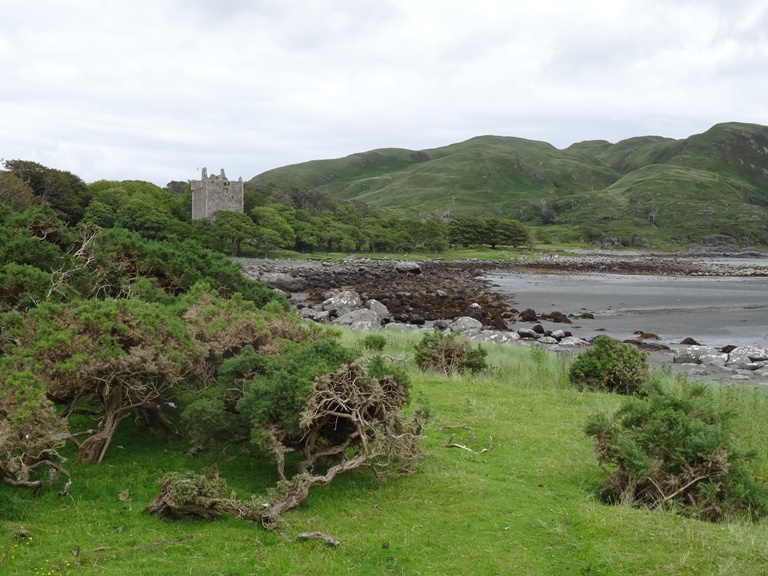
Iona and Staffa - We group these two islands together as they can both be done in a day trip if you take one of the short cruises that depart from Fionnphort. Ideally, we would recommend that you try to allow more than a few hours on Iona so that you can visit the abbey and then take a walk to some of the island's beautiful beaches of white sand. With a little bit of sunshine, the beaches of Iona can provide you with inviting turquoise waters that wouldn't look out of place in the Caribbean.
Staffa is something that we consider a "must see" if you are going to Mull. There really isn't anything quite like it and Fingal's Cave is one of the few places that I would ever use the word "awesome" to describe. As a side show to Fingal's Cave, you might also meet some Puffins on Staffa. The puffins nest on Staffa from April to early-August, but the nearby and completely uninhabited Treshnish islands are where you will find larger puffin colonies. If you want to get up close to a puffin, the best thing to do is simply stay still and let the birds come to you. The puffins realise that they are safer from attacks by seagulls if they stay near humans who will chase the seagulls. They've got small brains, but they're not so dumb.
Ulva - Staying on the subject of islands that you can visit as day trips from Mull, we think Ulva is well worth a visit. Particularly as the ferry ride only takes about 3 minutes and the island has a great little seafood restaurant just beside the pier. If you're just feeling lazy, you could have a very pleasant time heading to Ulva for a lobster lunch, but it would be a pity to come this far and not explore more of the island.
Like many other parts of Mull, the population of Ulva was decimated by the Clearances. When you walk around the island today, it is hard to imagine how it once managed to sustain a community of 600 people. A large percentage of those inhabitants were employed in the kelp industry which harvested the abundant quantities of kelp seaweed around the island to produce soda ash which was used for manufacturing soap and glass. When the price of kelp collapsed in the 1840's, it resulted in mass emigration from Ulva and the population went from over 600 in 1840 to just 150 by 1846. The islanders suffered greatly due to a callous landlord, Francis Clark, who evicted his tenants by burning down their crofts.
Today, Ulva is a peaceful place albeit tinged with a lingering sense of sadness. As you walk along the track from the pier to the 19th century church (built 1828) you can still discern the fish traps that the islanders built in the many little inlets along the coast. There are many deserted cottages on the island, but the ones that leave the strongest impression are at Ardglass point. Here you find a row of low lying walls from a string of cottages known as "Starvation Terrace". These were the homes of evicted crofters who had no place else to move to. They lived out their last days in grim conditions surviving on a diet of seaweed and shellfish.
Beaches - So many good options here that we could write a blog just on subject of the beaches of Mull & Iona. In fact I might just do that, but here's a few pictures to let you see what we mean. Probably the most popular and busiest beach on Mull is the one at Calgary Bay. It is busy enough to justify having its own very cute little ice cream shack which is a quirky little hut with a roof made from the hull of an old rowing boat.
A much less visited beach, as it is really quite hard to find unless you are in the know, is the "Black Beach" which is on the west coast of Mull a few miles north of Ballygown. You have to cross through a field that is usually occupied by some rather menacing looking Highland Cattle (so you can't get to the beach during calving / lambing season). As the name suggests, the sands at this beach are a very dark grey due to a high content of volcanic rock. This is quite unusual on Mull as most of the beaches are sparkly white sands and almost Carribean looking on a sunny day. By comparison, the Black Beach is quite a sombre mono-chromatic looking beach and it makes for interesting photography on overcast days when the landscape is a moody palette of greys. Unfortunately, this beach does attract quite a few "wild campers" and this means there is an accumulation of rubbish in some corners of the beach.
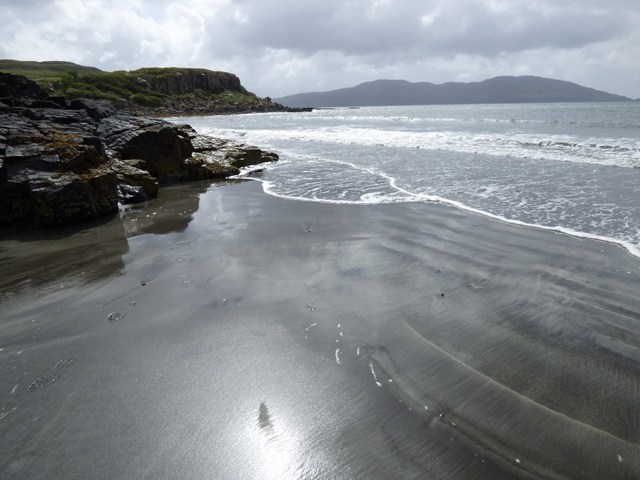
Our favourite beach on Mull is at Langamull on the island's north coast. To get to this beach you have a walk of 30 to 40 minutes, but this walk deters most people when Calgary beach is not so far away and is so much easier to access. The benefit of this is that you can usually have Langamull Beach all to yourselves even on a sunny day in July. We took these pictures on the 22nd of July last year and there wasn't another sole in sight. Although we did have the company of Oystercatchers, Kittiwakes and lots of Sheep grazing on the wild flower meadow behind the beach.
Drink at the Mishnish - the waterfront of Tobermory is one of the island's great attractions and it is an image that you'll probably know even if your knowledge of Scotland is limited to a few holiday brochures. The brightly painted houses of Tobermory Bay are a relatively new tradition that is supposed to have started in the 1960's when one of the hotels was painted pink and the neighbours joined in with a variety of vibrant hues and pastel shades. The Mishnish hotel is the middle building of the red, yellow and blue painted facades at the north end of the bay. It isn't always yellow painted and was black just a few years ago, but yellow has become the accepted norm for the Mishnish.
Whilst very distinctively yellow outside, it is the bar that we like most at the Mishnish, and more specifically the cozy little nooks located along the back wall of the bar. If you are planning on a long session of drinking in the Mishnish, we'd recommend that you get one of these snug little corners as you can make yourself feel right at home in the comfy leather sofas. You might also get some live music as the Mishnish is very much the social hub of Tobermory.

